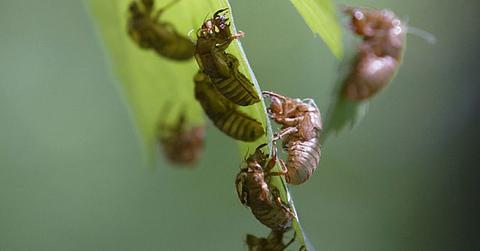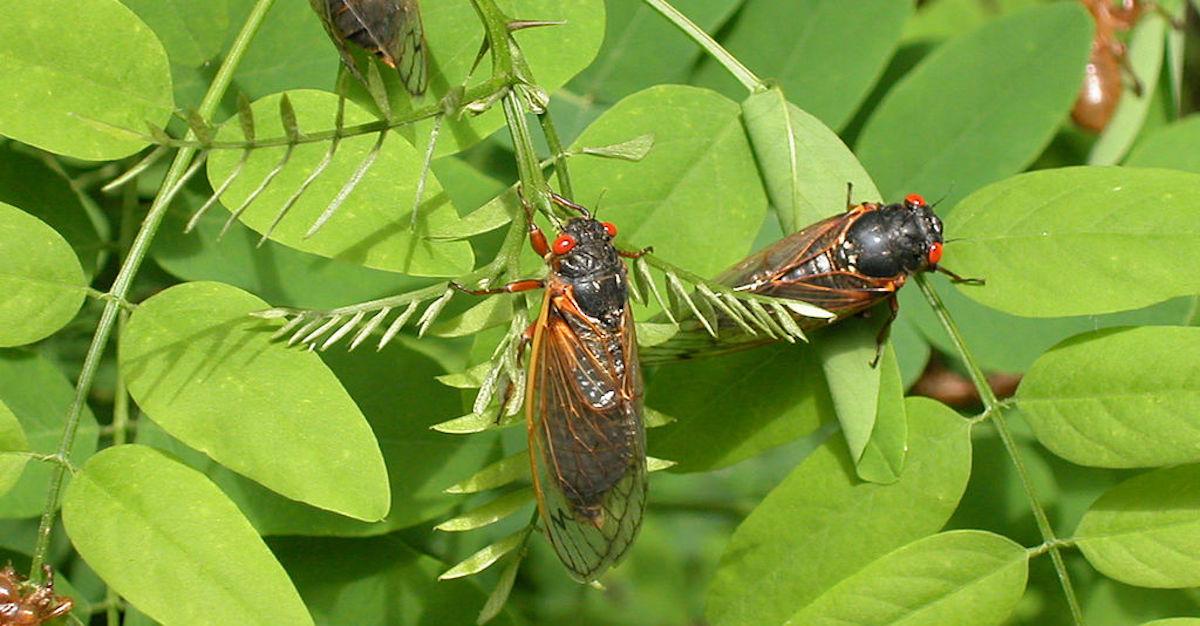What Are Brood 10 Cicadas? They're About to Invade 15 U.S. States
Published Jan. 25 2021, 11:34 a.m. ET

Cicadas Emerge in Eastern USA
We're currently in the midst of a pandemic; however, the nationwide chaos is set to continue through summertime — a raging cicada infestation is predicted to affect at least 15 U.S. states in mid-May or early June. Scientists are able to predict the invasion because this variety of cicada, known as the Brood 10, emerges from hibernation periodically, about every 17 years.
Keep reading for more information on Brood 10 cicadas — characteristics of the pest, the reason why they emerge every 17 years, and what to predict for this routine takeover.

What is a Brood 10 cicada?
Brood 10 cicadas, which are also known as locusts, include a variety of subspecies, including the Magicicada septendecim, which has orange stripes on its back, as well as the Magicicada cassini and Magicicada septendecula, which are almost entirely black, according to Newsweek. These fascinating pests hibernate underground for 17 years at a time. During hibernation, they're most often found eating tree root sap.
The Brood 10 cicadas emerge from their hibernating "nymph state" in trillions in order to intimidate predators, utilizing a technique called predatory satiation. Once they've successfully made it above the ground, Brood 10 cicadas embark on an extensive mission to mate and lay eggs. Their mating sounds can reach up to 100 decibels, and once the eggs are laid, they almost always die shortly after. The young bugs then return underground, to eat tree sap for 17 years.
Here's what to expect from the 2021 Brood 10 invasion:
As previously mentioned, the Brood 10 cicadas will most likely emerge in mid-May or June (around 64 degrees Fahrenheit), shortly after some light rain. About 15 states can expect appearances, including: Delaware, Georgia, Illinois, Indiana, Kentucky, Maryland, Michigan, North Carolina, New Jersey, New York, Ohio, Pennsylvania, Tennessee, Virginia, West Virginia and Washington D.C., according to EcoWatch.
Although a flood of giant, and incredibly loud flying locusts in heat sounds undeniably intimidating, they forutnately don't cause much damage to homes, people, animals, or mature trees. However, young trees that were planted as recently as last year could be in danger, so experts recommend protecting young trees this spring and summer with nets, and possibly some natural insecticides, if possible.
"Densities can be as great as 1.5 million per acre. So, between Georgia and New York there will surely be trillions emerging," said University of Maryland's entomology expert, Michael J. Raupp, as per EcoWatch. "This is a wonderful opportunity for millions of people to witness and enjoy a remarkable biological phenomenon in their own backyard that happens nowhere else on the planet, truly a teachable moment."
Watch a video from the 2004 emergence, below.
These locusts are harmless, but that isn't the case for all locusts.
Deadly locust swarms took place in about 10 countries across East Africa and South Asia in 2020. Although the locust's swarms didn't directly hurt humans, they severely impacted affected countries' food supplies, feeding on crops that ultimately put food security at a major risk. The farmers who survive profits from those crops, as well as locals that eat the crops, were put in major danger, and with that, economies were severely affected.
These locust swarms were worse than ever last year, which experts attribute to rising global temperatures as a result of the climate crisis. With temperatures at an all-time high, desert locusts were able to breed more comfortably than ever. Once they start breeding, they don't stop, and can migrate and an alarming rate. this caused swarms to continuously form, depleting affected country's crops.
Hopefully, Africa's dangerous locust swarms won't make a vicious return this year, though unlike the Brood 10's, they come out annually.